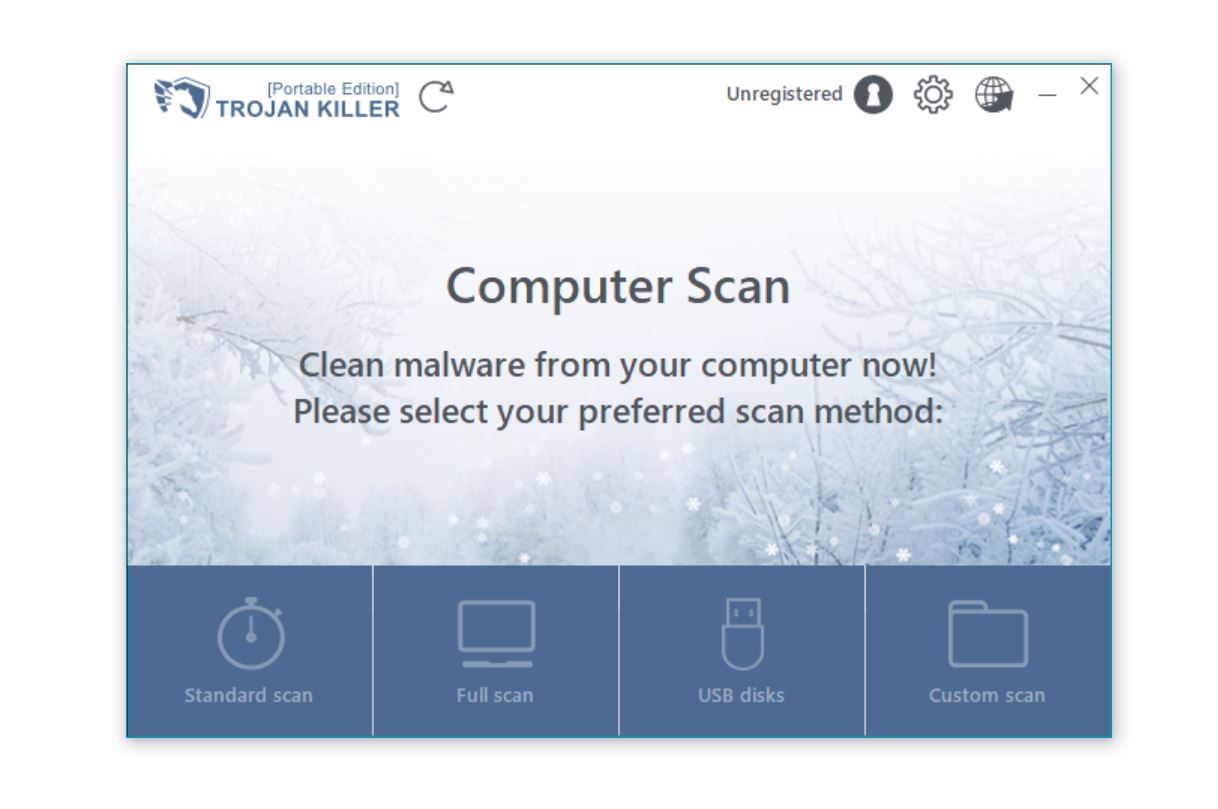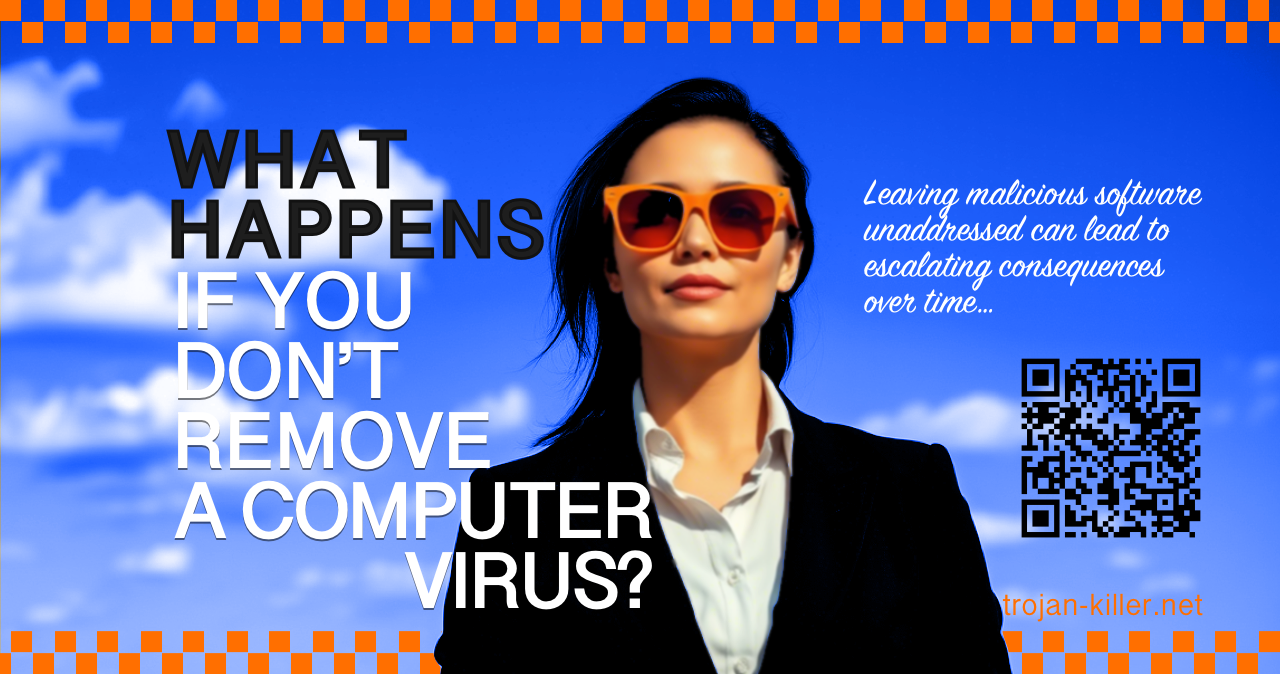Many computer users choose to ignore warning signs of malware infections or postpone virus removal, often thinking the problem isn’t serious or will resolve itself. However, leaving malicious software unaddressed can lead to escalating consequences over time. This guide explores what happens when viruses remain on your system and why prompt removal is essential.
Immediate Consequences of Ignoring Malware
Within days of infection, unaddressed malware typically begins causing noticeable issues:
1. System Performance Degradation
One of the earliest signs of malware presence is a gradual slowdown of your computer. This happens because:
- Malicious programs consume system resources (CPU, RAM, disk space)
- Background processes multiply as the malware executes its code
- System files become corrupted or modified
According to Microsoft’s Digital Defense Report, compromised systems can experience up to 80% reduction in available system resources due to malware activity.
2. Data Theft Begins
Many modern malware variants begin collecting sensitive information immediately:
- Keyloggers record everything you type, including passwords and payment information
- Info-stealers scan your system for stored credentials
- Banking trojans like TrickBot specifically target financial credentials
This data theft typically happens silently in the background, with no visible symptoms to alert you that your information is being compromised.
3. Malware Establishes Persistence
The longer malware remains on your system, the more difficult it becomes to remove because:
- It creates multiple startup entries and scheduled tasks
- It modifies system files to ensure survival after reboots
- Some malware variants install rootkit components to hide from security software
Medium-Term Consequences (1-4 Weeks)
As weeks pass, the situation deteriorates further:
1. Secondary Infections
Many modern malware variants function as “downloaders” that fetch additional malicious payloads:
- Initial infection with adware might lead to trojan installation
- Trojans like Dofoil specifically download additional malware
- Malware often installs “backdoors” that provide attackers with direct system access
This cascade of infections greatly complicates removal efforts and increases the potential damage to your system.
2. Financial Losses
Direct financial consequences begin to materialize:
- Stolen banking credentials lead to unauthorized transactions
- Compromised payment information results in fraudulent charges
- Cryptocurrency wallets may be emptied
- Some malware variants specifically search for and steal financial files
According to Microsoft Cyber Signals report, the average financial loss from malware-initiated fraud is approximately $10,000 for small businesses and $3,500 for individual users.
3. Privacy Breaches
Your personal information becomes increasingly exposed:
- Emails and private communications can be intercepted
- Webcams and microphones might be activated remotely
- Browsing history and habits are tracked for targeted attacks
- Personal photos and documents may be exfiltrated
4. System Corruption Progresses
The operating system begins to show more severe symptoms:
- Blue screen errors become more frequent
- Applications crash unexpectedly
- File associations break down
- System configuration changes occur randomly
Long-Term Consequences (1+ Months)
When malware remains unaddressed for months, the most severe consequences emerge:
1. Data Destruction or Encryption
Some malware variants are programmed to eventually destroy or encrypt your data:
- Ransomware activation – Many trojans eventually deploy ransomware payloads that encrypt all your files
- Deliberate file corruption – Some malware damages files to prevent system recovery
- Database deletion – Business-targeted malware may specifically target database files
2. Identity Theft
With sufficient personal data collected over time, attackers can commit comprehensive identity theft:
- Opening new financial accounts in your name
- Filing fraudulent tax returns
- Applying for loans or credit cards
- Creating synthetic identities that combine your information with fabricated details
3. Your Device Joins Botnets
Compromised systems are frequently enlisted in botnets – networks of infected computers controlled remotely:
- Your device may be used in distributed denial-of-service (DDoS) attacks
- Your bandwidth and processing power might be used for cryptocurrency mining
- Your IP address could be implicated in cybercrimes committed through your compromised system
According to Microsoft Security research, an average infected device contributes to 3-5 different botnet operations during its compromised lifespan.
4. Complete System Failure
Eventually, the accumulated damage may render your system unusable:
- Critical system files become too corrupted to function
- Boot sectors may be damaged beyond repair
- Hardware components might suffer from abuse (like overheating from crypto mining)
- Recovery options become limited as backups get infected
At this stage, even techniques like factory reset might be insufficient, as some advanced malware can persist in firmware or create hardware-level issues.
Business and Network Consequences
For business environments, the stakes are even higher:
1. Network-Wide Infection
Malware spreads across connected systems:
- Worm-like functionality allows rapid propagation through networks
- Shared resources become infection vectors
- Even segregated networks may be breached through lateral movement techniques
2. Reputational Damage
Organizations face serious reputational consequences:
- Customer data breaches damage trust
- Service disruptions affect reliability perceptions
- Public disclosure requirements can lead to negative publicity
3. Regulatory and Legal Consequences
Neglecting to address known malware can lead to:
- Significant fines under data protection regulations (GDPR, CCPA, etc.)
- Legal liability for damages resulting from compromised data
- Breach of contractual obligations with clients or partners
Why Malware Doesn’t “Go Away” on Its Own
Some users mistakenly believe malware might eventually disappear or become inactive. This misconception stems from several misunderstandings:
1. Malware Is Deliberately Persistent
Modern malware is specifically designed to maintain its presence on infected systems:
- Multiple persistence mechanisms ensure survival after reboots
- Self-healing capabilities restore damaged components
- Anti-removal techniques actively fight against security software
2. Evolutionary Nature of Modern Threats
Today’s malware often receives updates from command and control servers:
- New functionality is deployed remotely
- Evasion techniques are improved over time
- Vulnerabilities in the malware itself are patched by attackers
The Compounding Problem: Why Removal Gets Harder Over Time
Delaying malware removal creates a compounding problem:
1. Malware Embeds More Deeply
Given time, malware establishes stronger footholds:
- Creates redundant persistence mechanisms
- Modifies more system components
- Deploys rootkit technologies that hide its presence
2. Removal Tools Become Less Effective
Standard removal approaches become increasingly challenged:
- System Restore points may contain the infection
- Backups might be compromised
- Safe Mode boot options could be disabled or compromised
How to Tell If Your Computer Has a Virus That Needs Immediate Attention
Watch for these warning signs that indicate you should take immediate action:
- Unusual slowdowns – Particularly during startup or when performing simple tasks
- Unexpected behavior – Programs launching by themselves or strange system messages
- Browser issues – Homepage changes, redirects, or new toolbars you didn’t install
- Unusual network activity – High data usage without explanation
- Missing files – Documents disappearing or becoming inaccessible
- Strange emails – Messages sent from your account that you didn’t create
- Anti-virus deactivation – Security tools being disabled without your action
Taking Effective Action: The Right Way to Remove Malware
When you suspect an infection, take these steps immediately:
Step 1: Disconnect and Isolate
- Disconnect from the internet to prevent data exfiltration and block command and control communications
- Remove connected storage devices to prevent infection spread
- If in a business environment, isolate the affected machine from the network
Step 2: Use Specialized Removal Tools
General antivirus software is often insufficient for entrenched infections. Instead, use specialized anti-malware tools like Trojan Killer, which are designed to:
- Detect sophisticated hiding techniques used by modern malware
- Remove deeply embedded infections that evade standard antivirus
- Repair system modifications made by malware
- Restore critical system settings compromised during infection

Here’s how to use Trojan Killer effectively to remove persistent malware:
- Download and Install Trojan Killer:
- Visit the official download page
- Download the installer and run it with administrator privileges
- Follow the installation wizard instructions
- Perform a Full System Scan:
- Launch Trojan Killer with administrator rights
- Select “Full System Scan” from the main interface
- Click the “Start Scan” button to begin the analysis
- Allow the scan to complete (may take 30-60 minutes depending on your system)
- Review and Remove Detected Threats:
- Examine the scan results, which will group threats by severity
- Select all detected malicious items (they are checked by default)
- Click the “Remove Selected” button to eliminate the threats
- Allow the removal process to complete without interruption
- Restart Your System:
- After removal completes, restart your computer when prompted
- This ensures all malicious processes are terminated and changes are applied
- Run a Verification Scan:
- After restarting, run Trojan Killer again
- Perform another full system scan to verify all threats have been removed
- If new threats are found, repeat the removal process
Step 3: Verify Complete Removal
After using removal tools:
- Scan with multiple security tools to ensure complete removal
- Check startup programs and scheduled tasks for suspicious entries
- Monitor system performance for return to normal operation
- Verify critical system settings have been restored
Step 4: Post-Infection Security
Once the immediate threat is addressed:
- Change all passwords (from a different, clean device first)
- Enable two-factor authentication on important accounts
- Monitor financial statements for unauthorized activity
- Consider identity monitoring services if personal information was compromised
- Update all software to patch vulnerabilities that may have allowed the initial infection
Conclusion
The consequences of ignoring malware can be severe and far-reaching, affecting your digital life, finances, privacy, and even your personal identity. The longer an infection remains, the more damage it causes and the more difficult it becomes to remove.
Rather than hoping the problem will resolve itself or postponing action, immediate response to suspected infections is always the best approach. By understanding what’s at stake and having a clear action plan, you can minimize the impact of malware and protect your digital life from the escalating consequences of unaddressed infections.
Remember that malware removal becomes increasingly complex over time, so if you suspect your system is infected, don’t delay taking action. Use specialized tools designed for effective malware removal, and implement strong preventative measures to avoid future infections.

